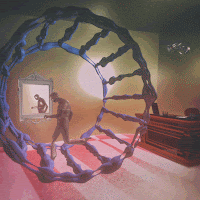During preproduction, the props master develops a props breakdown. This is essentially mapping out the logical progression of each prop throughout the story. In film and television productions the props master maintains the logical progression while shooting by ensuring the props are positioned in their correct logical place for each scene according to the props breakdown. If the logical progression of a prop changes during shooting, the props breakdown is revised to reflect the change. This job description varies somewhat from country to country. In the United States, food styling, weapons and animals are often directly or indirectly within the property master's domain. The job is a collaboration with the director, production designer, cameraman, set decorator and other members of the production to physically express their stylistic and aesthetic requirements. They maintain their own budget. There are physical aspects of productions that are managed by specialists other than the property master, for example costume designers are responsible for the actors' dress, and weapons masters are responsible for any weapons (firearms, blades, staff-based or otherwise).


















